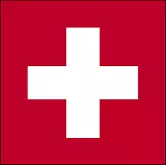Despite the political unity of Switzerland and the many similarities in lifestyle, the people are culturally diverse. The ethnic French, ethnic Germans, and ethnic Italians share languages, foods, dress, and cultures with other French, Germans, and Italians. Their cultural similarities are very strong across borders, however these cultural ties are not as strong as the political ties the people hold to one another. These political ties are what make the ethnic French, Germans, and Italians in Switzerland different from those elsewhere.
Switzerland exists due to a shifting in priorities: political priorities, philosophical priorities, and identity priorities. Despite the huge number of cultural similarities to people abroad, the Swiss first tend to identify with their nation, their neutrality, and their leadership as peacemakers and peacekeepers. These things are held more dearly to the Swiss than their language, their ethnicity, or their foods, which are only secondary when defining themselves. It is a very outwardly thinking model that is not proud, but selfless. It is a role that is needed in this world and thankfully their openness and acceptance also means their beautiful country is open to visitors as few will ever want to leave the peace and solitude of the impressive Swiss Alps.
 Switzerland has a square flag and a simple white cross design. This flag was used at least as early as 1339 in the Battle of Laupen to distinguish the troops of the Swiss Confederation, but its actual origins are unknown.
Switzerland has a square flag and a simple white cross design. This flag was used at least as early as 1339 in the Battle of Laupen to distinguish the troops of the Swiss Confederation, but its actual origins are unknown.
Name: Swiss Confederation (Confoederatio Helvetica)
Independence: August 1, 1291
Capital: Bern
Currency: Swiss Franc
Population: 7,996,026 (2013 estimate)
Ethnicity: German, French, Italian, & others
Language: German, French, Italian, & Romansch
Religion: Roman Catholic & Protestant